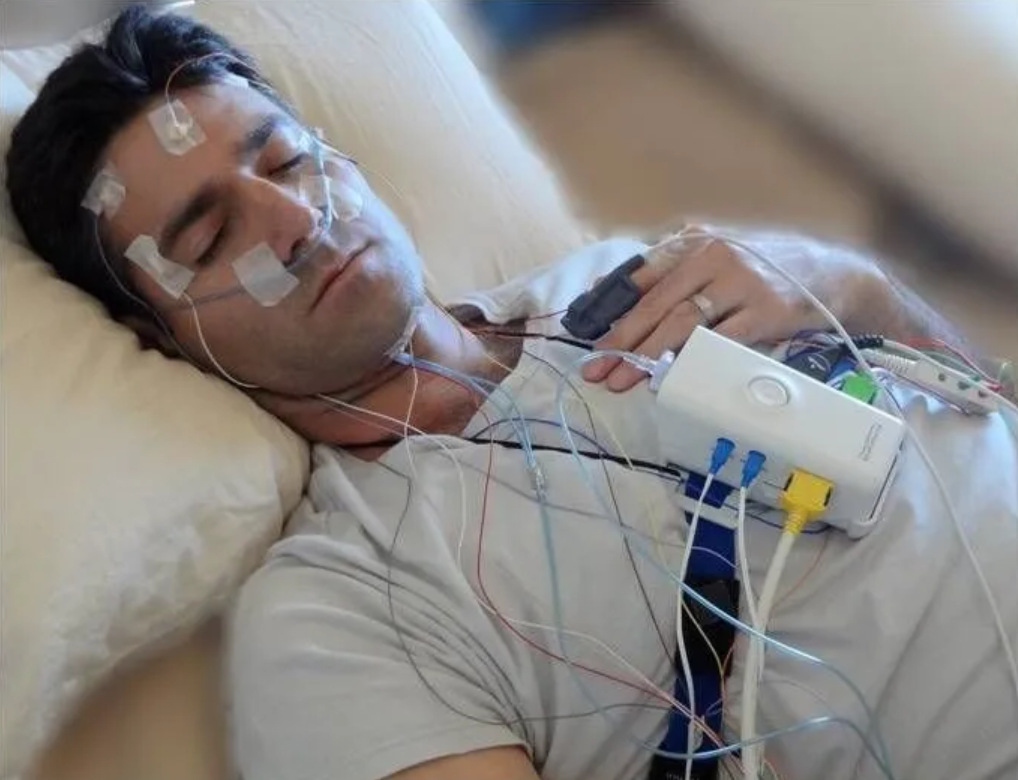A sleep apnea test, commonly known as a polysomnogram or sleep study, is designed to diagnose sleep disorders, including sleep apnea. The test records specific body functions while the individual sleeps. Here’s a breakdown of the process:
1. Preparation:
Before the test, the individual may be asked to maintain a sleep diary to record sleeping patterns and habits for a week or two. They might also be advised to avoid alcohol, caffeine, and certain medications that could interfere with sleep the day before the test.
2. Types of Sleep Apnea Tests:
- In-lab Polysomnogram (PSG): This is conducted in a specialized sleep center or hospital setting. Electrodes and sensors are attached to the individual’s body to measure and record activity as they sleep.
- Home Sleep Apnea Test (HSAT): For those who can’t get to a sleep center or for preliminary diagnosis, a home sleep apnea test might be provided. This test is less comprehensive than the PSG but can still effectively diagnose obstructive sleep apnea. The individual will be given equipment and instructions on how to use it at home.
3. Measurements Taken During the Test:
- Electroencephalogram (EEG): Measures and records brain wave activity.
- Electrooculogram (EOG): Records eye movement which helps indicate the different stages of sleep.
- Electromyogram (EMG): Monitors skeletal muscle activity including face twitches, teeth grinding, and leg movements.
- Electrocardiogram (EKG or ECG): Monitors heart rate and rhythm.
- Nasal airflow sensor: Measures airflow.
- Snore microphone: Records snoring activity.
- Effort belts: Placed around the chest and stomach to measure breathing effort.
- Pulse oximetry probe: Measures oxygen levels in the blood.
4. Analysis of Results:
After the test, a sleep specialist will analyze the results. In the case of obstructive sleep apnea, episodes where breathing stops (apneas) or becomes very shallow (hypopneas) will be noted. The frequency of these episodes will determine the severity of sleep apnea.
5. Diagnosis and Treatment:
Based on the test results, a diagnosis will be made. If sleep apnea is confirmed, the severity and type (e.g., obstructive, central, or complex) will be identified. The doctor will then discuss potential treatments, which might include lifestyle changes, the use of a CPAP (Continuous Positive Airway Pressure) machine, dental devices, medications, or in some cases, surgery.
In conclusion, a sleep apnea test provides invaluable information about an individual’s sleep patterns and disruptions, helping to identify and treat potential sleep disorders like sleep apnea.

